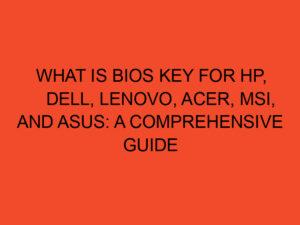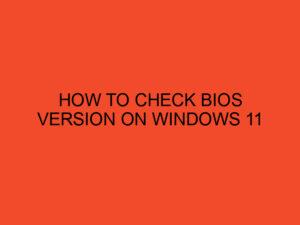Are you experiencing overheating issues with your GPU? One common cause of this problem is degraded thermal paste. Over time, the thermal paste on your GPU can dry out or lose its effectiveness, leading to inadequate heat dissipation and increased temperatures. Fortunately, replacing the thermal paste is a relatively simple process that can help restore optimal cooling performance to your graphics card. In this article, we will guide you through the steps to replace the GPU thermal paste, ensuring your GPU stays cool and performs at its best.
Table of Contents
- How to Replace GPU Thermal Paste?
- Signs of degraded thermal paste
- Preparing for the replacement
- Gathering the necessary tools
- Safety precautions
- Disassembling the GPU
- Removing the old thermal paste
- Applying new thermal paste
- Reassembling the GPU
- Testing and monitoring temperatures
- Tips for maintaining optimal cooling
- Conclusion
- FAQs
How to Replace GPU Thermal Paste?
In this section, we will provide a brief overview of the importance of thermal paste and why replacing it is necessary for maintaining GPU performance.
Signs of degraded thermal paste
Identifying the symptoms of degraded thermal paste is crucial before deciding to replace it. This section will highlight common indicators such as increased temperatures, GPU throttling, and artifacts during graphics-intensive tasks.
Preparing for the replacement
Before diving into the actual process, it’s essential to prepare yourself and your workspace. We’ll discuss the necessary precautions, including anti-static measures, ensuring a clean environment, and gathering all the required tools.
Gathering the necessary tools
This section will list the tools you’ll need to replace the thermal paste on your GPU. From thermal paste remover and isopropyl alcohol to lint-free cloths and thermal paste applicators, we’ll cover everything you need for a successful replacement.
Safety precautions
Working with sensitive computer hardware requires taking certain safety precautions. We’ll discuss measures such as grounding yourself, handling components carefully, and avoiding excessive force during disassembly.
Disassembling the GPU
In this step, we’ll guide you through the process of disassembling your GPU. We’ll explain how to remove the cooling shroud, fan assembly, and any other necessary components to access the GPU chip and old thermal paste.
Removing the old thermal paste
To ensure effective heat transfer, it’s crucial to remove the old thermal paste completely. We’ll explain the proper techniques to clean the GPU chip and cooler surfaces using thermal paste remover and isopropyl alcohol.
Applying new thermal paste
This section will cover the application of new thermal paste. We’ll explain the correct method to apply an appropriate amount of thermal paste evenly on the GPU chip, ensuring optimal heat transfer.
Reassembling the GPU
Once the new thermal paste is applied, it’s time to reassemble your GPU. We’ll guide you through the process of putting the components back together, making sure everything is securely attached and connected.
Testing and monitoring temperatures
After the reassembly, it’s essential to test your GPU and monitor its temperatures. We’ll provide tips on using temperature monitoring software to ensure that the thermal paste replacement has effectively improved cooling performance.
Tips for maintaining optimal cooling
To prolong the lifespan of your GPU and maintain optimal cooling, we’ll provide some useful tips. These tips will include regular cleaning, proper ventilation, and monitoring temperatures periodically.
Conclusion
In conclusion, replacing the GPU thermal paste is a simple yet effective way to address overheating issues and restore your graphics card’s performance. By following the steps outlined in this article, you can ensure that your GPU stays cool and operates at its best.
FAQs
How often should I replace the thermal paste on my GPU?
Thermal paste should be replaced every 1-2 years or whenever you notice increased temperatures or performance degradation.
Can I use any thermal paste for my GPU?
It is recommended to use a high-quality thermal paste specifically designed for CPUs and GPUs.
Do I need to remove the GPU from the motherboard to replace the thermal paste?
Yes, you will need to remove the GPU from the motherboard to access the GPU chip and replace the thermal paste.
Can replacing the thermal paste void my GPU warranty?
In most cases, replacing the thermal paste does not void the warranty. However, it’s important to check your GPU manufacturer’s warranty policy to be sure.
Are there any risks involved in replacing the thermal paste?
When done carefully and following the proper steps, replacing the thermal paste poses minimal risks. Just ensure you handle the components with care and take the necessary precautions.





